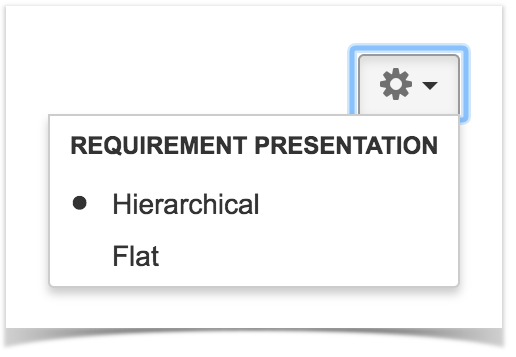Shows a daily historical view of Requirements coverage. It is possible to see the evolution of the Requirement's coverage status over time for a particular Analysis Version (or Test Plan) and Test Environment.
Please note
To use this report, your project must have the Requirement Coverage enabled. See how in Configure JIRA project to be used as Requirements project.
Purpose
This report allows users to evaluate the progress of the requirement coverage status, which implicitly takes into account the testing results associated with each requirement.
How to use
This report is either accessible from Xray Reports icon on the project left sidebar or from the standard Reports icon, which includes other kinds of reports besides Xray.
At the top of the report you'll find several areas related with the report and with the data shown in the report.
- A: Analysis & Scope, for choosing how to analyze the entities
- B: Group by, for defining how to visually group/aggregate items
- C: Filter, for selecting the source data
- D: Data range
- E: Visualization information and options
You need to configure the source data (i.e., the requirements) for the chart and how to calculate the requirement status for each.
Source data
Source "requirement" issues can be directly provided (within section C) using a saved filter or by specifying some requirement fields:
- Saved filter: a saved filter containing requirement issues
- Fix Version: version assigned to the requirement (You can also choose whether to include the previous versions - equivalent in JQL to fixVersion <= X. The default value for this option can be changed in the Xray configuration.)
- Key or Summary: requirement's key or summary
- Assignee: requirement's assignee
- Component: component assigned to requirement
- Workflow Status: workflow status
- Resolution: workflow resolution
There is also an options menu (within section E) where you can choose the visualization type for the report:
- hierarchical - only the parent requirement issues will be presented in the report, if the filter includes them. Sub-requirements can still be visualized in the overall details table.
- flatten - the requirement issues will not consider the parent/child relationship. All parent and child requirements will be considered and showed similarly in the report.
Analysis
On the left side (within section A), it's possible to define the analysis strategy, i.e., the way you want to analyze the selected/filtered requirements. You can choose to analyze either by Version or Test Plan, and complement it with a Test Environment.
If you choose analysis by Version, then the latest results from Test Executions for the specified version are taken into account. If you choose Test Plan, only Test Executions (and related results) associated with the given Test Plan are considered in the calculation of the requirement status.
If the Test Environment is specified, then only the executions that ran in the specified environment are considered.
Tips
For more information, please see Coverage Analysis and Understanding coverage and the calculation of Test and requirement statuses.
The user can also enter a time period (within section D) to analyze the daily coverage of requirements.
Please note
Some Xray global settings may affect the report (e.g. "Requirement Coverage Strategy", Ignore Requirements with statuses", "Ignore Requirements with labels", "Ignore Tests with status")
Example
This graphical report is composed of two similar vertical stacked bar charts: one showing absolute values and the other showing relative percentage normalized values. Both charts are interactive. Hovering over the different bars shows a small popup with information about the specific series (Status~Grouping, Date and Percentage/Value). You can deactivate a particular series by clicking in the series legend.
Each chart column shows the Requirement coverage status for a given day. Each status has a different color and is divided by Requirement Grouping with a gradient.






